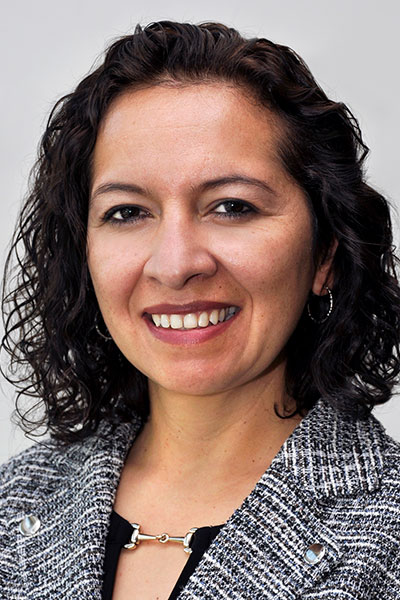
Cancer researchers have long been searching for a magic bullet to kill cancer cells, but tumor cells are remarkably good at evading death. The tumor microenvironment (TME) has emerged as a critical driver of tumor progression, and targeting the TME may be the needed tool to effectively treat cancer.
“Immunotherapy is a very clear example of targeting the tumor microenvironment,” said Diana M. Cittelly, PhD, Associate Professor of Pathology, University of Colorado Denver Anschutz Medical Campus School of Medicine. “With immunotherapy, we’re not targeting the cancer, we are targeting the microenvironment. And immunotherapy is the biggest breakthrough we have had in cancer therapy in years.”
Dr. Cittelly will moderate the educational session Targeting the Tumor Microenvironment for Clinical Impact on Friday, December 9, from 3:00 pm – 5:00 pm CT in Hemisfair Ballroom 1&2. The TME is moving from intriguing concept to practical therapy.
Igor Bado, PhD, Assistant Professor of Oncological Sciences, Icahn School of Medicine at Mount Sinai, will discuss the clinical implications of recent findings on the role of the bone TME in breast cancer metastasis.
“The bone is critical because so many cancer cells migrate to the bone, go dormant for a long time, and metastasize from there, particularly in ER+ breast cancer,” Dr. Cittelly said. “ER+ is the majority of breast cancers, which makes the bone TME such an important player in breast cancer.”
How to approach dormant cancer cells has long been the subject of intense debate, she continued. One thought is to let dormant cells remain dormant, possibly encourage dormancy, to better control cancer. The other is to awaken dormant cells and hit them with targeted therapies. Jose Javier Bravo-Cordero, PhD, Associate Professor of Medicine, Hematology and Medical Oncology, Icahn School of Medicine at Mount Sinai, will review the latest findings on mechanisms by which the TME can contribute to cancer dormancy and novel approaches to improve clinical outcomes.
Age is another evolving factor in TME activity. Clinicians have long recognized that younger patients and older patients tend to follow different patterns of breast cancer progression. One of the key mechanisms is the aging TME.
“Immune fitness, the type of immune response the body can mount against cancer, changes with age,” Dr. Cittelly noted. “That helps to explain why the TME in younger women promotes one type of tumor growth, while tumor growth in older women is different. That has important clinical implications that we can put to good use.”
Inflammation is one of the most obvious age-related changes to the immune system. Older people are more subject to chronic inflammation than younger individuals.
“Normal immune responses, especially inflammation, are a good thing when you think of killing cancer cells,” Dr. Cittelly said. “But chronic inflammation becomes tumor promoting. The real question is how do we target that inflammatory response, switch it from tumor promoting to tumor killing? That is one of the components of immunotherapy that we are still addressing.”
Angela DeMichele, MD, MSCE, Alan and Jill Miller Professor in Breast Cancer Excellence, Perelman School of Medicine, and Co-Leader of the Breast Cancer Program at the University of Pennsylvania Abramson Cancer Center, will discuss evolving approaches to harnessing inflammation to treat breast cancer.
“We are finally reaching that stage in basic research where we are finding targetable mechanisms in the TME and developing clinical approaches,” Dr. Cittelly said. “This session is at the forefront of what we are learning about how the TME might be impacting response to therapy and metastasis, which, ultimately, is what kills patients with breast cancer.”

